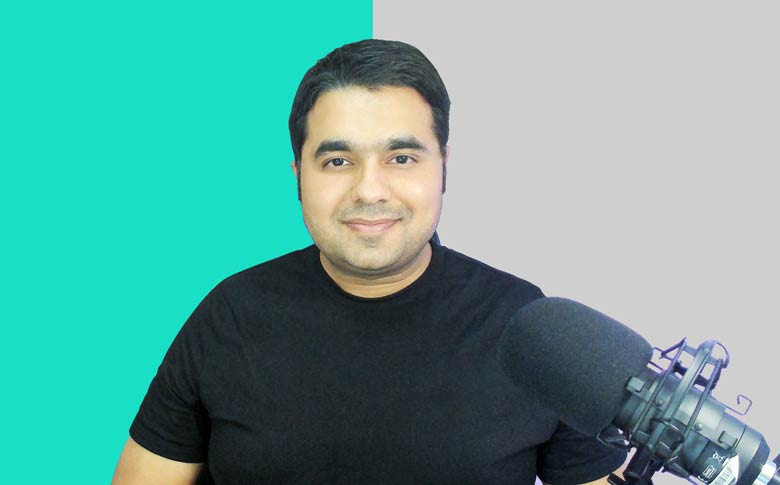
When I launched my first agency back in 2012, I had no idea we'd eventually build over 2000 websites for agencies across the globe. What started as a small operation from my apartment has evolved into something I'm genuinely proud of – a specialized white label web development shop that helps other agencies grow without drowning in overhead costs. I've been on both sides of the agency equation. Before starting Luminary, I ran a small digital marketing firm where I constantly struggled with the feast-or-famine cycle. One month we'd turn away work; the next, we'd wonder how to make payroll. If that sounds familiar, you're not alone. After 13 years in this business, I've seen virtually every agency growth strategy attempted – some brilliant, others disastrous. Today I want to share what actually works, based not on theory but on seeing hundreds of our agency partners either thrive or struggle.
Last month, I had coffee with a long-time agency partner who perfectly summarized the challenge: "I need to grow revenue without proportionally growing headcount, or my margins will collapse." This is the fundamental agency paradox. Traditional growth means:
I remember chatting with Mark (name changed), who runs a Calgary marketing agency, about his frustration with competing against every other "full-service digital agency" in town. After some frank conversations, he decided to focus exclusively on the healthcare sector – a vertical he already had three solid clients in. The transformation was remarkable:
Here's what most people miss about specialization: When you focus on a specific industry, you can actually expand your service offering within that niche. Rather than being one of many generalist vendors, you become the go-to expert for everything that industry needs. Real talk: This transition is scary. Turning away potential business feels counterintuitive. But I've watched dozens of agencies make this leap, and almost without exception, they wish they'd done it sooner.
I've watched too many agencies waste countless hours creating custom proposals for relatively standardized work. The agencies growing most efficiently have developed clear, tiered service packages. One of our partners in Toronto created three website packages:
The results were immediate: faster sales cycles, clearer client expectations, and more predictable resource planning. They still do custom work when needed, but having baseline packages streamlines 80% of their business. Real talk: Creating these packages requires discipline. You'll be tempted to make exceptions and customizations constantly. The magic happens when you resist that urge and stick to your defined scopes.
I'm obviously biased here since white label partnerships are our bread and butter at Luminary, but the data backs me up. The agencies with the healthiest growth trajectories are leveraging strategic partnerships to expand capabilities without expanding headcount. Here's what this looks like in practice: Sarah's agency specializes in brand strategy and design. Her clients constantly asked for website implementation, but building an in-house development team felt risky. She partnered with us at Luminary to handle the development work under her brand. The results:
When we started offering white label services, I studied why some agency partnerships thrived while others fizzled out. Over 13 years and 2000+ websites later, here's what makes the difference:
One of our agency partners in Vancouver put it best: "Hiring, managing and retaining good developers is a nightmare I no longer have to deal with." At Luminary, we've spent years refining our WordPress and PHP development processes. While you focus on strategy and client relationships, we handle:
That specialized expertise is hard to maintain in-house unless web development is your core business.
A few months back, an agency owner told me the reason he switched to Luminary was simple: "You guys actually respond to emails, and I can understand what you're saying." We've built our processes around agency needs:
What worked for us in the early days was simple: we scaled up and down with our agency partners' needs. Some months they needed three websites; other months none. Unlike hiring staff, working with a white label partner means you only pay for what you need. I remember one agency partner who landed a massive project requiring 12 websites in four months. Instead of panicking or turning it down, they simply called us and said, "Can you handle this?" We adjusted our capacity, and they delivered the project successfully.
When we started Luminary, I made a fundamental promise: we would never compete with our agency partners. We don't offer branding, marketing, strategy, or SEO directly to clients. We focus exclusively on being the best damn web development partner for agencies. This commitment means you can bring us into client conversations without worrying about us trying to poach your business. We succeed when you succeed.
The agencies I've seen achieve the most stable growth have shifted from project-based work to recurring revenue models. This doesn't mean abandoning project work entirely, but rather creating service offerings that generate predictable monthly revenue. Effective approaches include:
One agency partner built a "Digital Guardian" program that includes hosting, security monitoring, regular updates, and quarterly improvement sprints. They now have over 100 clients on this program, creating a stable base of monthly revenue that smooths out the inevitable project work fluctuations. Real talk: Building recurring revenue takes time and patience. The financial benefits often don't materialize for 6-12 months, but the long-term stability is worth the investment.
This might seem obvious, but I'm constantly surprised by how many agencies focus exclusively on deliverables rather than client outcomes. The agencies with the healthiest growth are obsessively focused on helping their clients succeed. Practical steps include:
I remember one agency partner who implemented quarterly business reviews with all clients and saw their retention rate jump from 70% to over 90% in just one year. Putting It All Together: A Sustainable Growth Strategy The agencies I've seen thrive over the long term don't just implement one of these strategies – they combine several of them into a cohesive growth approach. A typical combination might be:
This approach allows for significant growth without proportional increases in overhead and risk.
Over the past 13 years, I've learned that the most successful white label partnerships are true collaborations. We don't just build websites for our agency partners – we help them grow their businesses. If you're looking to scale your agency's web development capabilities without the overhead of a full technical team, I'd love to chat. No hard sell, just a conversation about whether there might be a good fit. You can reach me directly at anuj@luminary.software or check out some of our work here. Connect with me on Linkedin.

